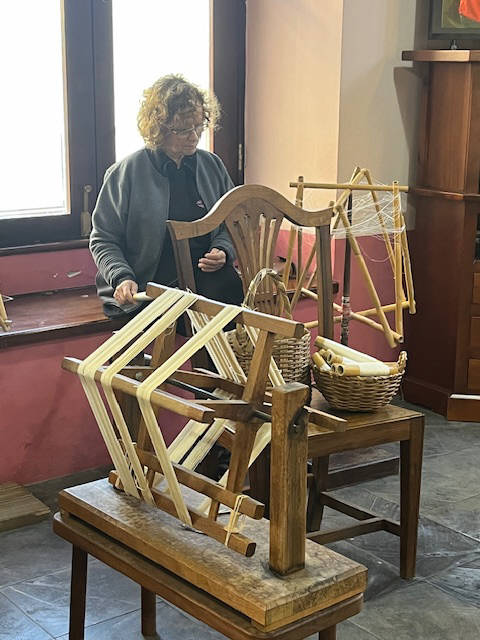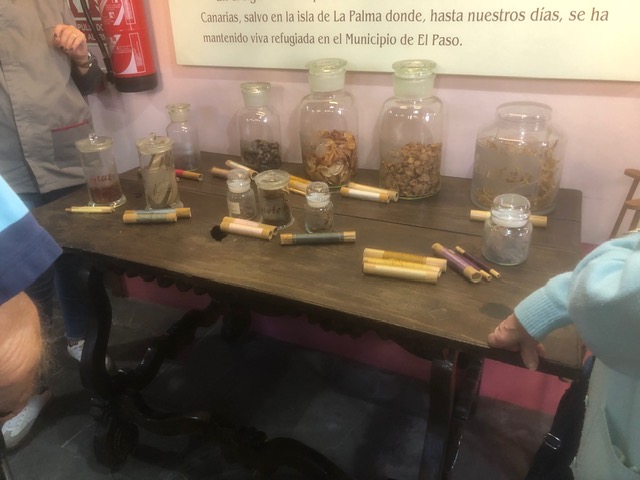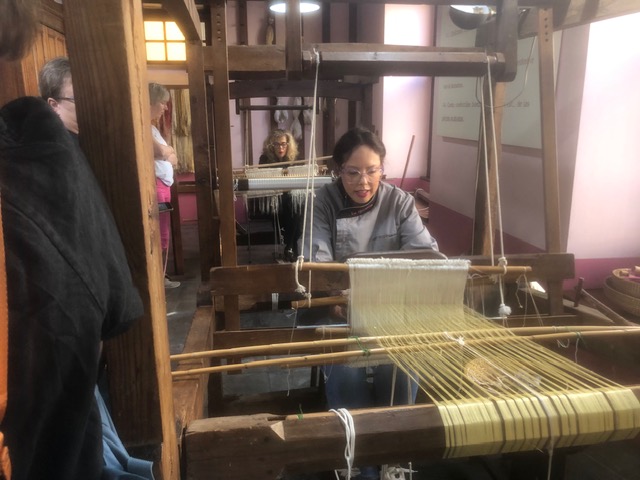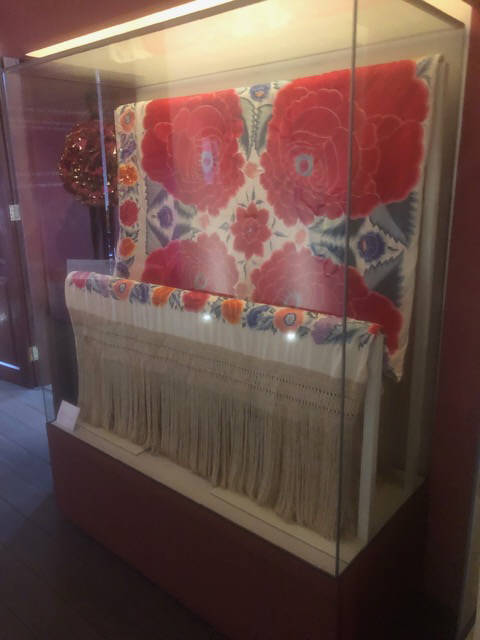The Bower & Collier Family History
Research by Colin Bower
Silk Weavers named Collier
Techniques used in Silk Weaving
per leaflet from the Silk Weaving Museum in El Paso, La Palma

"Silk-weaving, something that in former times was common in several of the Canary Islands, is now on the brink of disappearing and is only kept up on La Palma island. The way silk is woven in El Paso is unique in Europe.
The same techniques, used by the original settlers five centuries ago, have been handed down from generation to generation and are still used today.
The complex silk-making process, mainlycarried out by women, goes right from the breeding of silk worms to the final sewing of articles using the resultant cloth.
Over Twelve Steps Needed
Over twelve different steps are needed to obtain a finished garment.
1. Threading of the pods using a hand mill to produce a skein of raw silk.
2. Using the mill "zarja" to wind the original skein into smaller skeins.
3. Pairing. Rolling up several skeins at the same time on a spool.
4. Twisting several open ends (the number is variable and depends on requirements) into one single thread using two spindles. Once the length between the two spindles has been twisted, it is rolled on to a spool,
at the same time as the new thread, to be twisted, is unrolled from the other.
5. Once the silk has been twisted, the mill is used once again to put it into skeins.
6. Boiling. The sericine is scoured or removed by washing with soap and water.
7. Dyeing with natural products.

8. Rolling up using a spool winder for warping or quills for weaving.
9. Warping. Preparation of the threads that have to sit on the loom.
10. Seating. The rolling of the warp on the loom.
11. Heddling. Threading the heddles.
12. Reeding. Threading of the reed.
13. Weaving. Passing the shuttle through the warp threads.

14. Cutting, sewing, embroidery, ironing etc. of the finished garments."

Colin Bower
31 January 2025
